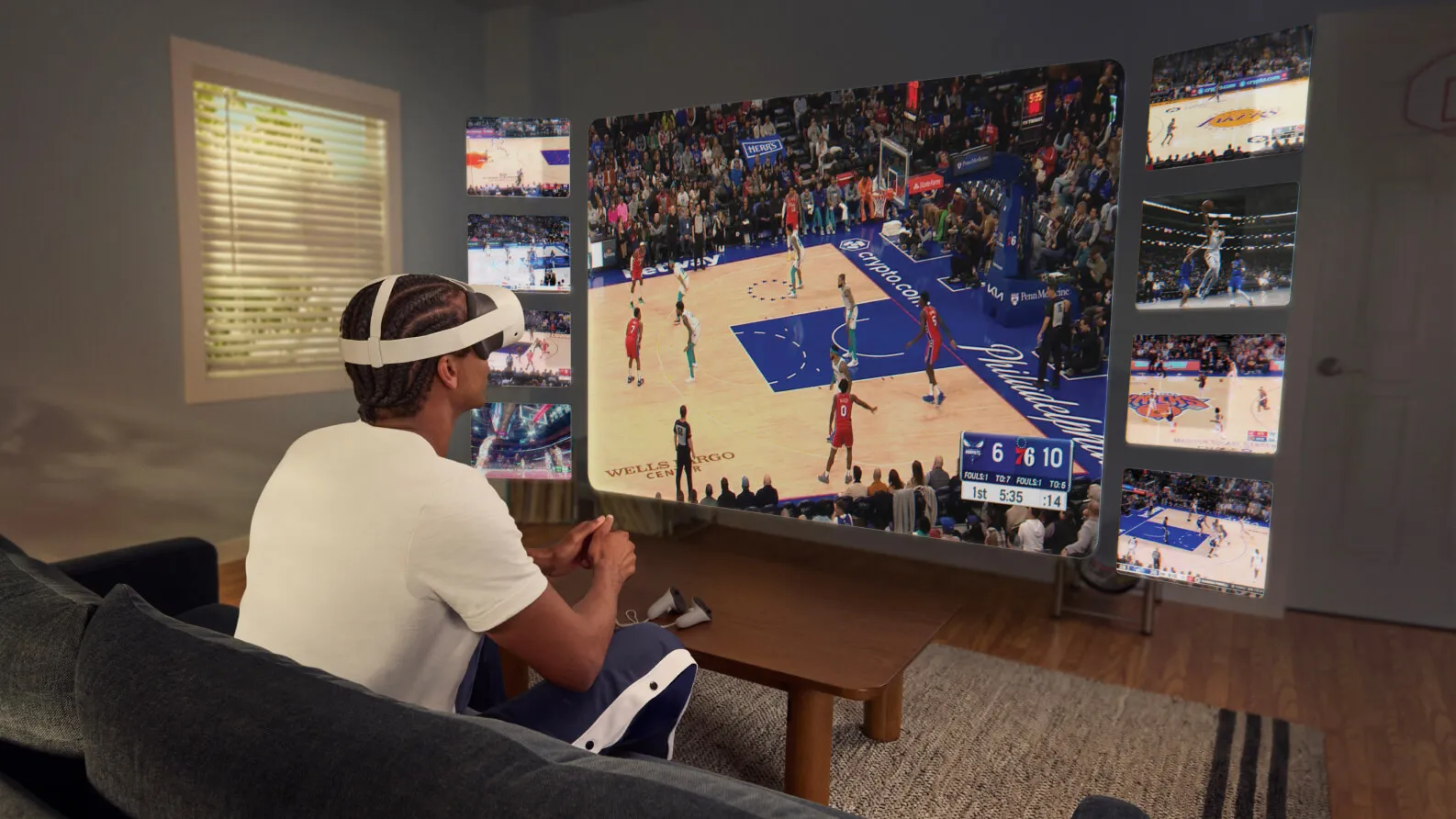
As sports become more digital, immersive technology is changing how fans enjoy their favorite teams and players. Fans can expect exciting new experiences that deepen their connection to the game. New tools will help teams create a sense of belonging, turning casual viewers into dedicated supporters. The mix of gamification, AI, AR, and VR offers significant potential, showing that sports fandom is growing and thriving. The challenge will be to maintain the excitement and passion that make sports special while integrating these technologies.
As more organizations adopt new technologies, stadiums can become lively places where every game feels like a must-see event. Fans will benefit from personalized, engaging, and memorable interactions, ensuring their love for sports continues to grow amid these changes.
In 2024, the global sports market reached nearly $600 billion, with much of that revenue from fan engagement. Teams and venues are investing in technologies like immersive AR/VR experiences, personalized mobile apps, and interactive displays. These innovations aim to create stronger connections between fans and the sports they love. Using data analytics, teams can learn what fans like and adjust their offerings. Additionally, gamification and fan tokens give fans a more active role in the sports world. This shift creates a new era where fans are not just spectators but active participants in their sports.
How Tech is Changing Sports for Fans

Immersive Experiences: Getting Closer to the Game
Sports fans want to feel part of the action. New tech helps make this happen. Augmented reality (AR) lets fans see stats and replays right on their phones, as if they were on the field. Virtual reality (VR) can put fans in the game, even if they are miles away. Some teams use VR to give fans a look at what it’s like to be on the field during practice. For example, the Dallas Cowboys use VR for fan experiences at their stadium. This gives fans a closer look at the team and the game.
Staying Connected: Better Wi-Fi and 5G
Good internet is key for a good fan experience. Stadiums are upgrading their Wi-Fi and using 5G to make sure fans can use their phones without problems. This means fans can share photos and videos, check scores, and order food, all without lag. The NFL has partnered with Verizon to bring 5G to many of its stadiums. This makes a big difference for fans who want to stay connected during games.
Big Screens and Interactive Displays: More Than Just the Game
Big video boards show more than just the game. They show replays, stats, and even social media posts from fans. Interactive displays around the stadium help fans find their way, get food, and learn more about the team. The Mercedes-Benz Stadium in Atlanta has a huge video halo board that shows fans all sorts of information. This adds to the excitement of being at the game.

Personalized Experiences: Making it Your Own
Tech can make each fan’s experience special. Mobile apps let fans order food from their seats, buy tickets, and even get deals on team gear. Some teams use data to learn what fans like and send them special offers. For example, some NBA teams use data to send fans deals on tickets to games they might like. This makes each fan feel valued.
Gamification: Making Fans Part of the Action
Games and challenges can make watching sports more fun. Some teams use apps that let fans predict what will happen in the game. Fans can earn points and win prizes. This makes fans feel like they are part of the game, not just watching it. The Golden State Warriors use a mobile app that lets fans play games and win prizes during games.
Data and Analytics: Learning About Fans
Teams use data to learn what fans want. This helps them make the fan experience better. For example, teams can use data to see what food is most popular at games. Then, they can make sure they have enough of that food. Data also helps teams know what kind of deals fans like. The use of data helps teams improve the fan experience and keep fans coming back.
Fan Tokens and Blockchain: Giving Fans a Say
New tech like fan tokens and blockchain can give fans more power. Fan tokens are like digital coins that fans can buy. These tokens can give fans a say in some team decisions, like what songs are played at games. Blockchain is a secure way to keep track of these tokens. This tech is still new, but it could change how fans interact with their teams. Some European soccer teams use fan tokens to let fans vote on things like team jerseys.
Comparing Fan Engagement Options
There are many ways for teams to use tech to engage fans. Here is a look at some of the main options:
| Tech | Pros | Cons |
|---|---|---|
| AR/VR | Immersive experience, unique views | Can be costly to set up, may not work for all fans |
| Improved Wi-Fi/5G | Better connectivity, easy access to apps | Requires stadium upgrades, can be expensive |
| Big Screens/Displays | More info for fans, adds to the game’s excitement | Can be costly, needs good planning |
| Mobile Apps | Personalized offers, easy ordering | Needs good app design, relies on fans using the app |
| Gamification | Fun and engaging, makes fans active | Needs creative ideas, must be easy to use |
| Fan Tokens | Gives fans a voice, builds loyalty | New tech, can be hard to understand |
The Future of Fan Engagement
Tech is always changing. In the future, we may see even more amazing ways for fans to connect with sports. AI could make experiences even more personal. Wearable tech could give fans real-time stats. VR could make it feel like you are at any game, no matter where you are. As cities get smarter, stadiums could link with city systems to make it easy for fans to get to games. These changes will make being a fan even better.
The Rise of Esports and Fan Engagement
Esports, or competitive video gaming, has seen explosive growth, attracting massive audiences both online and at live events. This rise has brought new ideas to fan engagement. Esports often uses online platforms for fan interaction. Streaming services like Twitch let fans watch live matches, chat with other fans, and even interact with pro players. This level of interaction is something traditional sports are starting to adopt. Esports also uses digital items like virtual skins and in-game items to build fan loyalty. These items can be traded and collected, creating a digital economy around the game. This idea is also starting to appear in traditional sports with things like digital trading cards and NFTs. The success of esports shows how important digital interaction is for modern fans. Traditional sports can learn a lot from how esports engages its audience.
Short Summary:
- Immersive technology is enhancing fan engagement in sports venues.
- Leagues are utilizing innovative solutions to cater to younger audiences.
- Future developments promise personalized and interactive experiences for fans.
The world of sports is undergoing a remarkable transformation, primarily driven by advancements in technology. Today, fans crave not only the thrill of live games but also an interactive and immersive experience that connects them deeply with their teams. While traditional sports viewership faces challenges, particularly among younger generations, leagues and organizations are stepping up to create innovative solutions that align with evolving consumer expectations. Professor Michael Lewis points out,
“If sports fandom is formed by early experiences, these results suggest that fandom for major American sports will crater in the decades ahead.”
Yet, this challenges sports organizations to innovate and attract fans, especially Generation Z, who remain indifferent to conventional sports like their predecessors.
Fandom’s Evolving Landscape
Statistics show a stark contrast in how younger generations perceive sports. According to recent surveys, only 27% of Generation Z actively engage with sports. As millennials and older generations find joy in live games, Gen Z remains skeptical, reporting lower interest and higher disengagement. Furthermore, they are twice as likely to forgo watching sports compared to their older counterparts. This drastic shift has put pressure on sports leagues to adapt and meet the expectations of these digital-native fans.
To address this ongoing dilemma, leagues like the NBA and MLB are exploring new formats, and incorporating in-game tournaments and alterations to existing structures. Yet, as evident from these trial changes, leagues realize that mere structural changes won’t suffice in retaining or boosting viewership. The key is integrating interactive and immersive technologies that resonate with fans’ desires for community, authenticity, and gamification.
Impact of Immersive Technology
One key player in this technological evolution is immersive technology, notably augmented reality (AR) and virtual reality (VR). This technology blurs the lines between digital and real-life experiences, allowing fans to engage with their favorite players in unprecedented ways. By creating interactive environments where fans can experience games from various angles and perspectives, stadiums are actively revamping how fans experience live events.
For instance, major teams like FC Barcelona and the Brooklyn Nets have established virtual arenas providing fans with a digital space to engage with their teams. This immersive approach allows them to witness pivotal moments from unique vantage points, access real-time stats, and participate in engaging mini-games—all reinforcing their connection with the sport and its players.
Innovative Methods of Engagement
In addition to AR and VR, sports organizations are discovering new ways to enhance fan engagement directly within the stadium. For example, the NBA has launched a limited selection of games on the Meta Quest VR platform, offering fans a taste of immersive viewing experiences. Notable examples include the NFL’s collaborations with networks like Nickelodeon and Disney, which showcase innovative telecasts that appeal to younger audiences; the “Toy Story Funday Football” and “Manningcast” both captivated millions, driving viewer engagement to unprecedented heights.
The success of these methods can be quantified through significant increases in viewership; during a 2022 NFL game broadcasted on Nickelodeon, audience ratings soared, marking the most-watched wild-card game in seven seasons. This not only highlights Gen Z’s affinity for engaging, interactive formats but also emphasizes the importance of appealing to a diverse demographic to sustain viewer interest.
The Rise of Digital Features
From gamified experiences to interactive overlays, current technology enables a rich narrative of fan engagement. For instance, the YES Network’s introduction of Live Stats and Watch Party features during Nets’ broadcasts led to remarkable increases in viewer engagement, with average streams per game up 212% year-over-year. Fans crave a sense of community and participation, underscoring the need for augmented experiences that complement traditional live viewing.
The potential for immersive technology doesn’t stop there; it also extends to enhancing physical stadiums. Venues like SoFi Stadium and the MSG Sphere are redefining fan dynamics through features like mixed-reality displays that provide real-time insights and enhance the overall game atmosphere. The idea is not just to watch a game but to live it fully, engaging all senses in the process.
All-in-One Experience
One such technology stirring attention is Brightline’s patented Pose With, allowing fans to create shareable experiences with their favorite athletes, improving engagement metrics and ticket sales. For instance, the “Pose with the Pros” initiative by the Dallas Cowboys saw overwhelming participation and impressive media impressions within its first weeks. With over 4,500 fans utilizing the service at each game, the Cowboys set a precedent in leveraging technology to deepen fan relationships.
“This technology has revolutionized fan engagement as we know it,”
one executive stated, emphasizing the importance of authentic connections in the ever-evolving sports landscape. “Fans today crave an authentic connection with players, an experience that technology can provide effectively.”
Future Outlook for Fan Engagement
As we peer into the future, it is evident that immersive technology will play an integral role in reshaping sports leagues and arenas. Digital-first experiences will never replace the thrilling ambiance of attending a live game; they will enhance it. The focus should not be merely on transforming the live game product but instead on changing how these experiences are presented to the audience.
Emotional investment holds considerable sway in fandom. As such, innovations that generate lasting memories will ensure sports remain a cherished pastime. Building emotional ties through tailored interactions, interactive broadcasts, and immersive environments will keep fans engaged long after the final whistle.
Addressing Potential Challenges
Despite the excitement surrounding these innovations, challenges accompany such rapid technological advancements. While the desire to modernize the fan experience remains high, stakeholders must balance incorporation costs with long-term benefits. Arena operators face the pressing need to build secure, reliable environments while also addressing data privacy concerns related to fan interactions.
Implementing technology to improve the fan experience can quickly escalate in complexity and cost. As more data is collected on fan preferences and behaviors, ensuring that such sensitive information is safeguarded must be a top priority. It is crucial for organizations to strategize effectively to retain fans’ trust while simultaneously maximizing the amenities and engagement levels offered.






